In celebration of UCLA’s first 100 years, we’re traveling back in time to visit some of the people, places and moments in time that have had a lasting impression on who we are as a university.
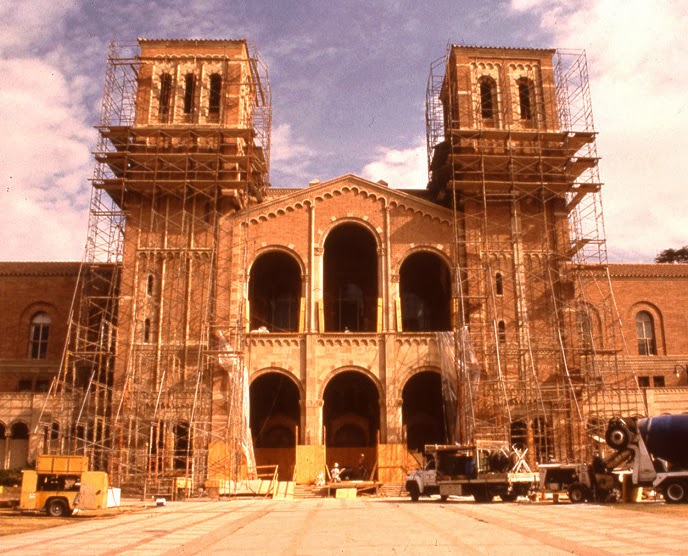
Royce Hall Under Repair From Northridge Earthquake
The 1990s were a tumultuous era for Los Angeles: an economic recession struck the nation, followed by UC-wide budget cutbacks; the city rioted after the Rodney King verdict; a controversial state proposition impacted admission decisions; and an early morning earthquake shook the Southland. The 90s was also the era of MTV, the rise of multiculturalism and the fall of the Soviet Union. The decade was a turning point in technology with the advent of the laptop computer impacting everything from the student experience — no more typewriters — to scientific research, the entertainment industry and on-line registration.
Through it all, UCLA continued to grow, both in size and as an academic powerhouse. A 1995 National Research Council survey ranked UCLA among the nation’s premier research universities, with 31 Ph.D. programs among the top 20 in their fields – third best in the country.
L.A. RIOTS/REBELLION
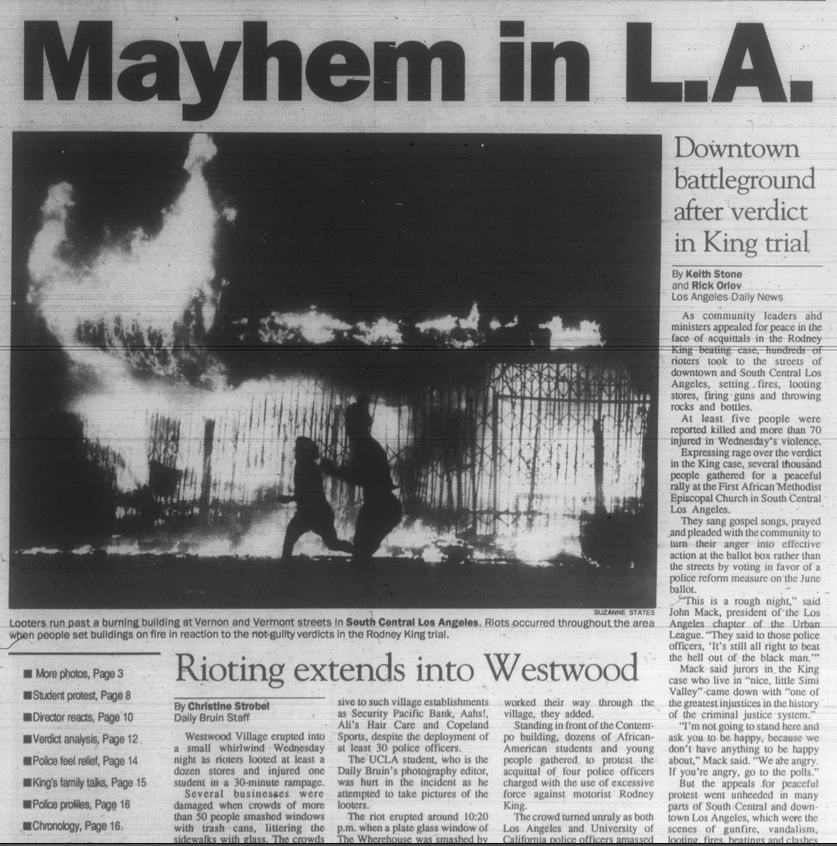
Daily Bruin Headline During L.A. Riots
CHICANO STUDIES
In the turbulent 1960s, UCLA had made a commitment to confront bias with the establishment of the Institute of American Cultures (IAC), bringing diverse voices to UCLA. However, the debate reignited in 1990 when UCLA suspended new admissions to the undergraduate Chicano studies major, citing the recession and social and budget policy changes. The student group MEChA (Movimiento Estudiantil Chicano de Aztlán) organized a demonstration calling for a Chicano Studies department. The proposal gained support in the Academic Senate but in 1993, after years of negotiations, UCLA Chancellor Young announced the program would not be implemented.
Events on the UCLA campus drew national attention to the movement when, on May 11, 1993, following the death of Cesar Chavez, protesters challenged this decision by staging a sit-in at the UCLA Faculty Center. Emotions were high, 80 protesters were arrested and there was an estimated $30,000 in damage. Later that month, five students, one professor and three community members began a hunger strike protesting Young’s decision, with hundreds rallying in support. The civil disobedience lasted two full weeks, resulting in a compromise agreement. On June 7, 1993, more than 1,000 gathered outside Murphy Hall to celebrate the establishment of the César E. Chávez Center for Interdisciplinary Instruction in Chicana and Chicano Studies.
AFFIRMATIVE ACTION
As a public university, UCLA is mandated to educate a student body that reflects Californians — with diversity across socio-economic, ethnic, geographic and cultural backgrounds. Outreach programs were put in place following student protests in the late 1960s, in response to a UC study that found Native American, African American, Latino and students from low-income households were not prepared by their schools for UC admission. By 1991, as a result of these and other actions, UCLA’s undergraduate student body had become the most diverse of any research university in the nation.
In 1995, Mother Jones magazine named UCLA one of its Top 10 Activist Campuses. That year the UC Regents voted to discontinue affirmative action for admissions and employment. A year later, Californians passed Proposition 209, amending the state constitution to prohibit state institutions from considering race, sex or ethnicity in public employment, public contracting and public education. Following the passage of
Proposition 209, minority student enrollment declined — African American students fell from 693 in 1995 to 99 in 2006 — the lowest since the 1960s. In response, the University and the Alumni Association, in partnership with the Black Alumni Association, the Latino Alumni Association and American Indian Alumni of UCLA, expanded outreach efforts to admitted students from underrepresented minorities to welcome students to UCLA.
CHALLENGING THE FUTURE
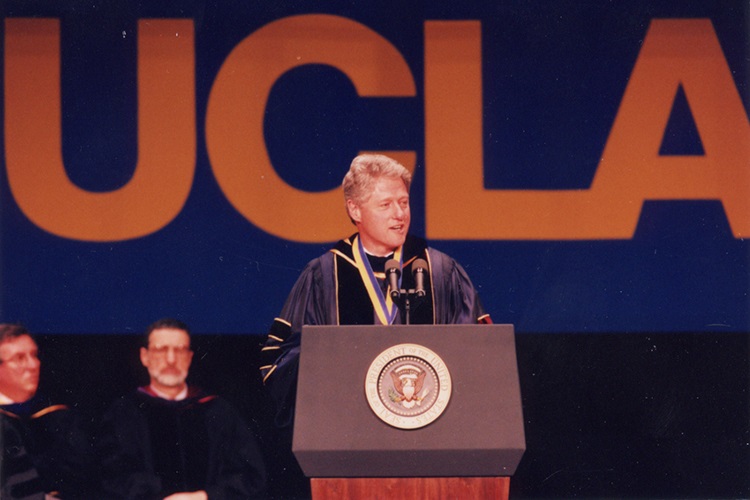
President Clinton at UCLA's 75th Anniversary Convocation
The 1990s graduated some of the leading politicians and proponents of civic change of the future. They include Los Angeles City Councilman David Ryu ʼ99, who became Los Angeles’s first Korean American council member in 2015; Congresswoman Linda Sánchez, J.D. ʼ95, who made history as the first Latina to serve on the House Committee on the Judiciary; and recent presidential hopeful Senator Kirsten Gillibrand, J.D. ʼ91, who was elected the youngest member of the U.S. Senate. Ryu, a past president of the Asian Pacific Alumni of UCLA, has said, “Being at UCLA, with the diverse array of experiences, people and backgrounds, was eye-opening. UCLA is like a family ... I couldn’t be more thankful to UCLA and the alumni for helping shape this great life I have had the privilege to live thus far.”
NEW GROWTH & SUSTAINABILITY
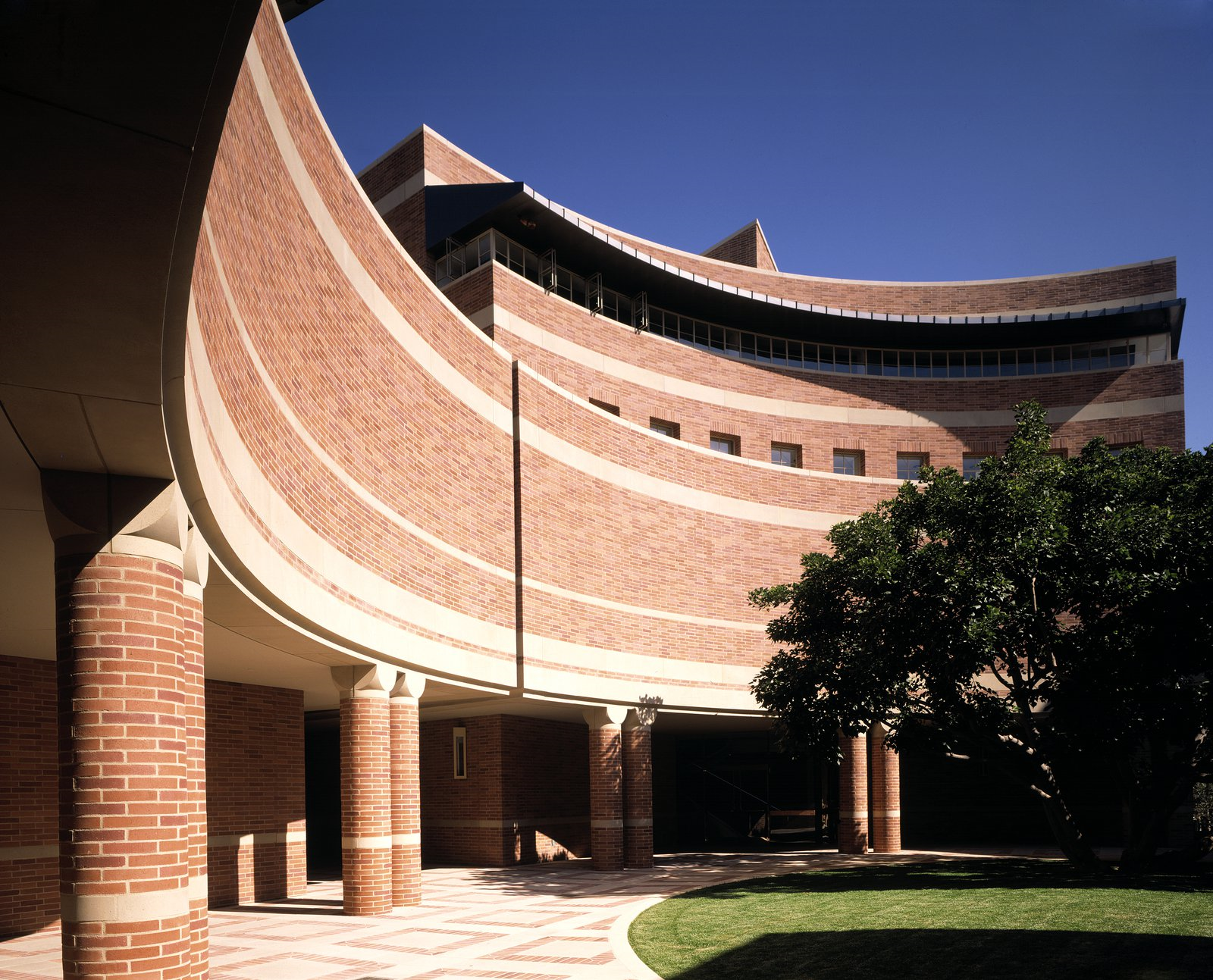
UCLA Anderson School of Management
In 1994, UCLA opened its first new professional school in almost 30 years, the School of Public Policy and Social Research, today the Luskin School of Public Affairs. UCLA Luskin recently marked a quarter-century of advancing the public good through social work, urban and regional planning, and policymaking.
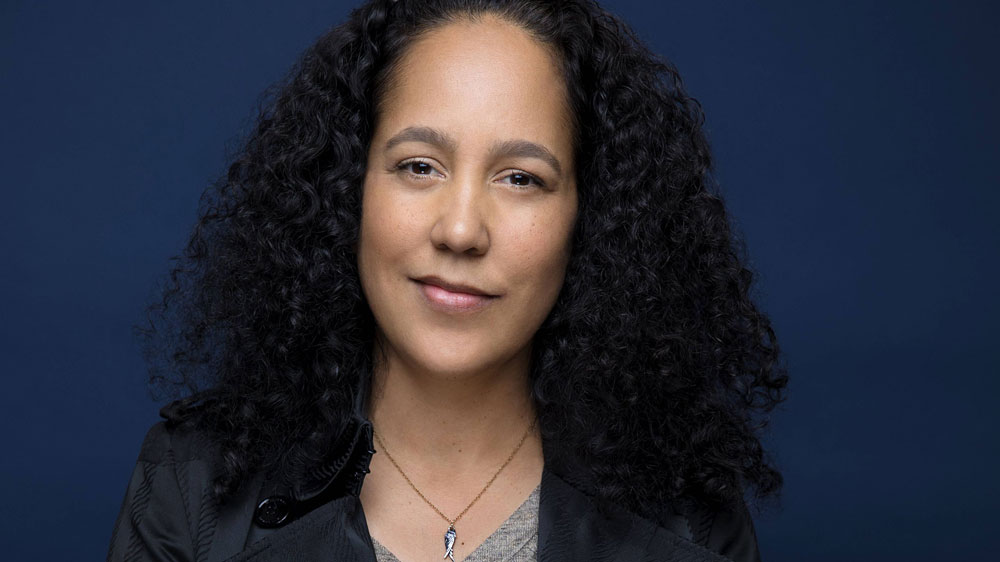 Evolving technology opened new pathways for creative endeavors. UCLA students of the 90s utilized all available mediums for artistic expression — from film, to music, to performance — many crediting UCLA for giving them the tools to realize their vision.
Evolving technology opened new pathways for creative endeavors. UCLA students of the 90s utilized all available mediums for artistic expression — from film, to music, to performance — many crediting UCLA for giving them the tools to realize their vision.
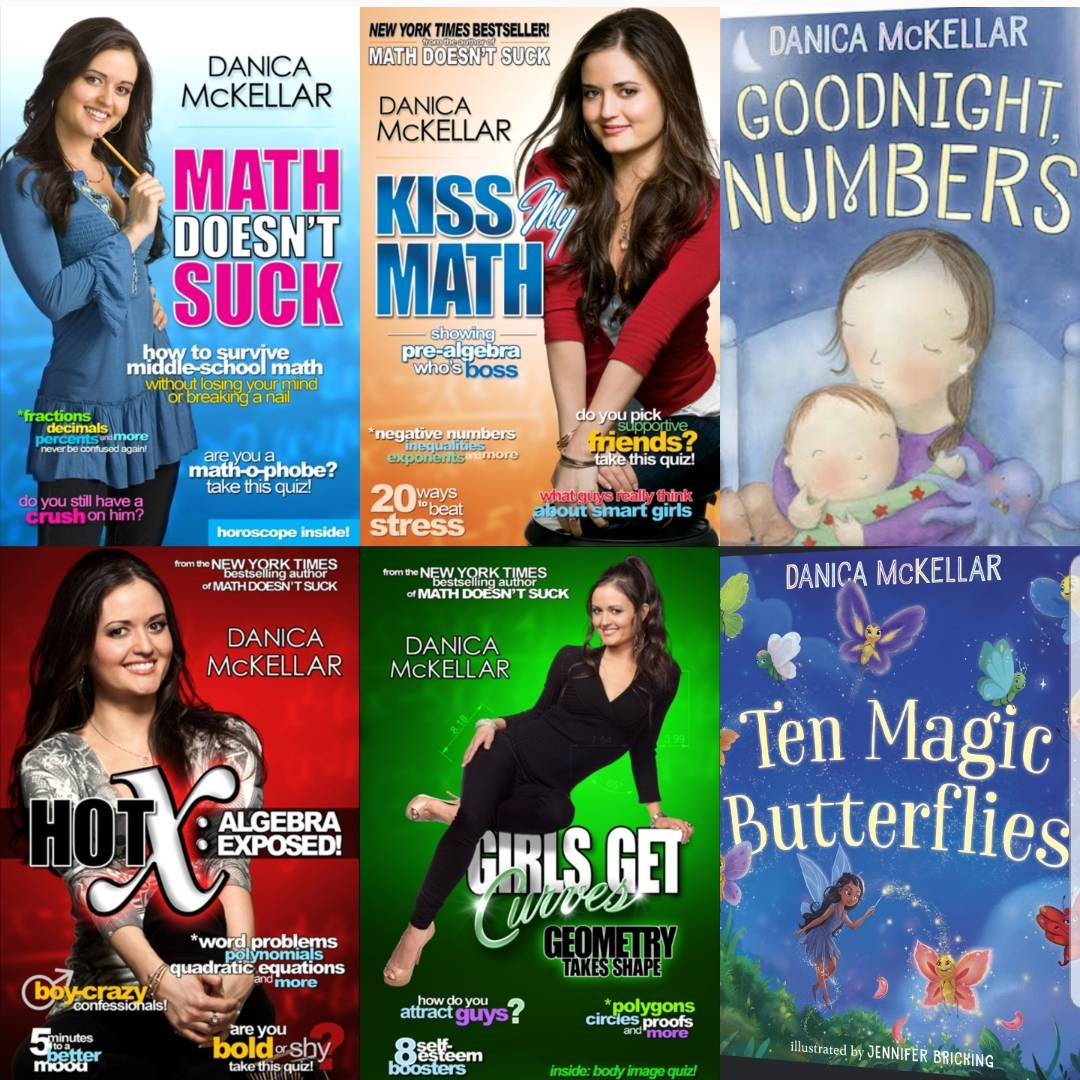 Actress Danica McKellar ʼ98, known for roles on “The West Wing” and “The Wonder Years,” has written six non-fiction books about mathematics. McKellar began acting at a young age and discovered her love of studying math at UCLA where she graduated summa cum laude in mathematics, working for two years as a calculus tutor. She says about her time at UCLA, “It gave me a chance to reinvent myself, and to value myself for something other than being on television.”
Actress Danica McKellar ʼ98, known for roles on “The West Wing” and “The Wonder Years,” has written six non-fiction books about mathematics. McKellar began acting at a young age and discovered her love of studying math at UCLA where she graduated summa cum laude in mathematics, working for two years as a calculus tutor. She says about her time at UCLA, “It gave me a chance to reinvent myself, and to value myself for something other than being on television.”
In 1990, Donald Findley, former executive director of ASUCLA, received the Bruin Bear Award from Chancellor Charles Young for his work as the champion and founder of UCLA’s beloved family camp, Bruin Woods. Alumni leaders had wanted to open a vacation and conference center at the Lake Arrowhead facility since the 1940s. Findley, who had been instrumental in creating the Treehouse, Kerckhoff Coffee House, North Campus Student Center and The Cooperage, guided the renovation of the rundown property, now host to generations of alumni families.
As campus grew, UCLA began to address sustainability issues, and by 1990, campus had reduced its water use by 18 percent and was diverting waste from the landfill to recyclable energy. UCLA’s cogeneration plant, which can generate a large percentage of campus energy needs, opened in 1993. Sustainability expert and UCLA Alumni board member, Jaime Nack ʼ98, M.P.P. ʼ02, described her college experience as a “boot camp” for her business and marketing skills. The environmental consultant and marketing strategist said, “How you walk through life can have an impact in many ways. You can choose to look through an environmental and social lens and make change.”
NORTHRIDGE QUAKE RATTLES CAMPUS
Campus jolted awake at 4:31 a.m. on Jan. 17, 1994, to the 6.7 magnitude Northridge earthquake — centered approximately 17 miles north of Westwood. The quake surprised sleeping students, knocking out power and rattling nerves. Students were forced to evacuate Dykstra after the dorm suffered cracked ceilings, buckled doorways and broken windows. The UCLA Medical Center emergency room experienced a large influx of patients with earthquake-related injuries. Undergraduate classes were canceled after the shaking caused significant structural damage. Kerckhoff’s spires rotated a full six inches, and cracks appeared on Royce Hall, forcing the building to close.
At the time of the quake, UCLA was in the midst of a two-decade seismic reinforcement program. This program was instrumental in preserving UCLA’s iconic structures; however, many remained shuttered for months. Charles Oakley, UCLA campus architect, told the Daily Bruin, “From the construction site point of view, we did much better than my fears at 4:30 this morning. We were far from untouched, but it was nothing cataclysmic.”
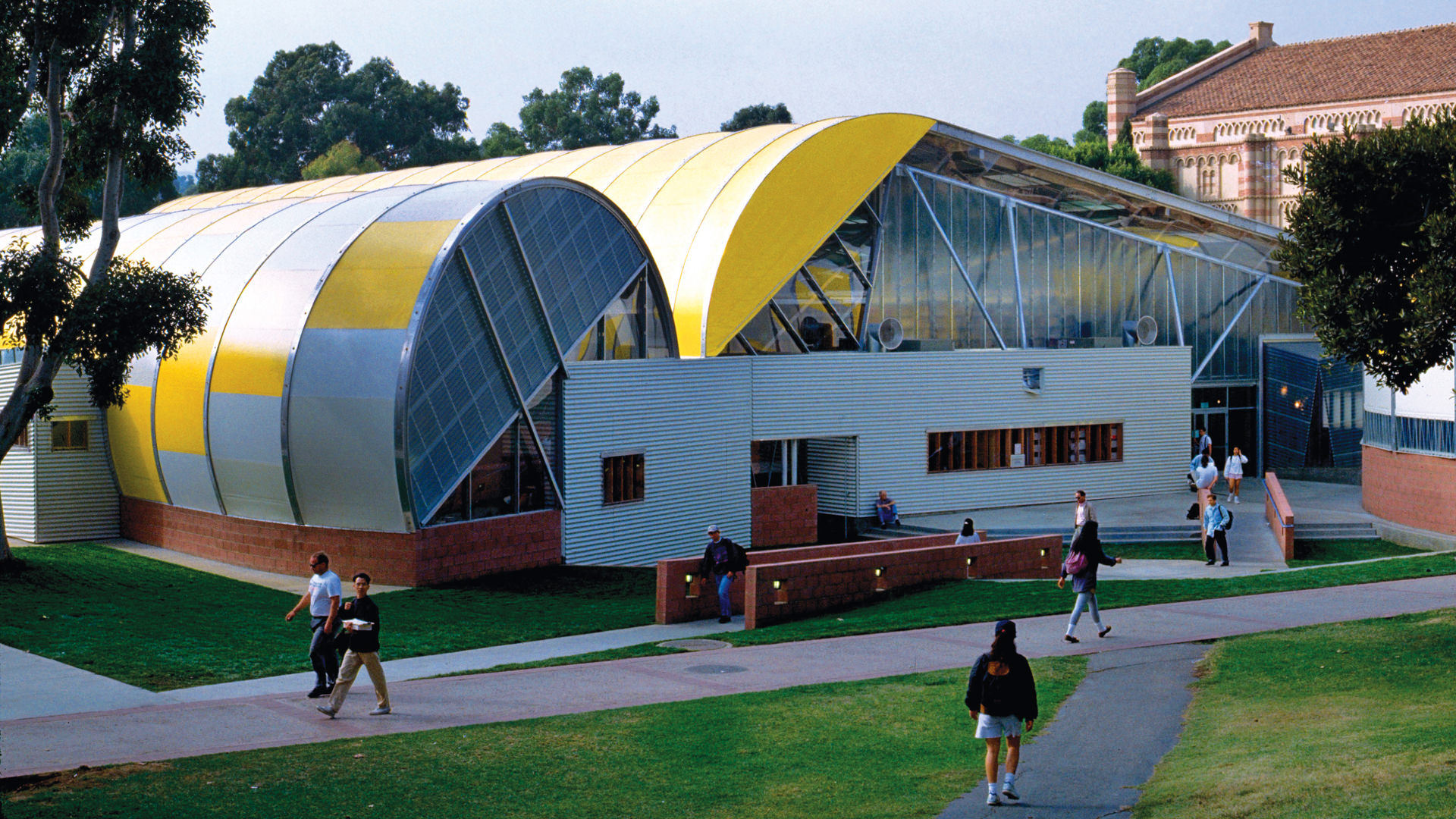 Powell Library, one of the first four buildings on campus, began a seismic upgrade in 1992. The firm Hodgetts + Fung, comprised of UCLA professor Craig Hodgetts and Hsinming Fung, M.Arch. ’80, were enlisted to design a temporary home for 150,000 of the library’s six million volumes. Hodgetts + Fung used a sense of playfulness to create a blue and gold, aluminum, Plexiglas and canvas structure nicknamed Towell — Temporary Powell Staging Facility. Located at the bottom of Janss Steps, the structure was built quickly for a cost of $3.2 million. Before being dismantled, Towell was briefly repurposed as classrooms and by ASUCLA as retail space.
Powell Library, one of the first four buildings on campus, began a seismic upgrade in 1992. The firm Hodgetts + Fung, comprised of UCLA professor Craig Hodgetts and Hsinming Fung, M.Arch. ’80, were enlisted to design a temporary home for 150,000 of the library’s six million volumes. Hodgetts + Fung used a sense of playfulness to create a blue and gold, aluminum, Plexiglas and canvas structure nicknamed Towell — Temporary Powell Staging Facility. Located at the bottom of Janss Steps, the structure was built quickly for a cost of $3.2 million. Before being dismantled, Towell was briefly repurposed as classrooms and by ASUCLA as retail space.

Towell Library
ARTS ON CAMPUS
UCLA has long been an incubator for a wide range of artistic and cultural events. Students arrive at UCLA to learn from icons in their chosen field, and campus hosts performances and lectures. In 1996, UCLA’s campus was host to a crowd of 75,000 for the first annual Los Angeles Times Festival of Books. While the festival has moved on, it is now the largest book fair in America, attracting over 130,000 book lovers.
With a mission to champion art that challenges the viewer and inspires change towards a more just world, the Hammer Museum opened its doors to the public in November 1990. The museum, financed by Occidental and adjacent to their headquarters, was built to house Dr. Armand Hammer’s extensive private collection of paintings and drawings. Three weeks after opening, Dr. Hammer passed away, and the museum asked neighboring UCLA to take on operations. The collection has grown to over 2,000 works of art, including many emerging artists. Free admission to the Hammer Museum is made possible through the generosity of Erika J. Glazer and Brenda R. Potter.
The Fowler Museum of Cultural History, later renamed the Fowler Museum at UCLA, opened in 1992, replacing a cramped independent research unit in the basement of Haines Hall housing 30,000 artifacts donated mainly from archaeological digs. Museum director Christopher Donnan said, “Our collections represent the artistic traditions of the world and include some of the finest examples anywhere.” In 1981, UCLA raised $22 million to build the new structure. The museum currently holds 170,000 pieces from contemporary, historic and prehistoric cultures, and has a mission to explore global arts and cultures to increase appreciation of the world’s diverse cultures. Through repatriation efforts, the Fowler works to return donated Native American remains and artifacts back to its tribes.

Gina Prince Bythewood '91
Eric Nakamura ʼ93 and Martin Wong ʼ90 bonded over a shared interest in punk rock and Asian pop culture. The pair co-founded the self-published magazine Giant Robot, which grew into a full-color publication with worldwide readership and shops in Los Angeles, San Francisco and New York City. Nakamura curates museum exhibitions, including the Giant Robot Biennales. Wong helped to create Save Music in Chinatown (SMiC), promoting all-ages shows to support public elementary schools.
Film director, producer and writer Gina Prince-Bythewood ʼ91 was honored in 2009 as UCLA Filmmaker of the Year by the School of Theater, Film and Television. She also ran track at UCLA, qualifying for the Pac-10 Championships in triple jump during her sophomore year. Prince-Bythewood’s directorial debut, which she also wrote, was the acclaimed film “Love & Basketball.”
After graduating from UCLA with a history degree and plans to become a financial broker, actor Will Forte ʼ93 instead honed his comedic skills as a member of The Groundlings, a Los Angeles improvisational troupe. Forte joined Saturday Night Live in 2002, performing offbeat sketches. He received acting and writing Emmy nominations for his role on “The Last Man on Earth.”

Books by Danica McKellar ʼ98
Classical violinist Eric Gorfain ʼ91 now plays contemporary music, from KISS to Pearl Jam, with a string quartet. He says “I didn’t realize that I wanted to be a professional musician until I got to UCLA. If I had chosen a different college, (my professional music career) may not have happened.”
Director Kristin Hanggi ʼ98 made her Broadway debut with the ʼ80s rock musical “Rock of Ages,” becoming the youngest woman nominated for Best Director of a Musical. Hanggi attended the UCLA School of Theater, Film and Television and says, “UCLA provided me with a lot of encouragement and nurturing. The school’s amazing resources allowed my imagination to play. If we wanted to put on a show in the theater department, we were allowed to put on a show.”
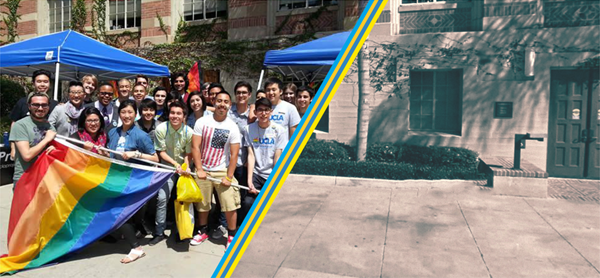 The UCLA LGBT Center opened its doors in 1995 under the direction of doctoral student Charles Outcalt. In 1997, Dr. Ronni Sanlo, the founder of Lavender Graduation, was recruited to grow the center. In 1991, UCLA Lambda (LGBTQ) Alumni Association, one of the oldest and most well-established LGBTQ alumni organizations in the country, organized the first UCLA presence at LA Pride. UCLA established an undergraduate minor in lesbian, gay, and bisexual studies in 1997 and holds an annual Pride Week, including an on-campus Pride Parade, to celebrate UCLA’s LGBTQ + community.
The UCLA LGBT Center opened its doors in 1995 under the direction of doctoral student Charles Outcalt. In 1997, Dr. Ronni Sanlo, the founder of Lavender Graduation, was recruited to grow the center. In 1991, UCLA Lambda (LGBTQ) Alumni Association, one of the oldest and most well-established LGBTQ alumni organizations in the country, organized the first UCLA presence at LA Pride. UCLA established an undergraduate minor in lesbian, gay, and bisexual studies in 1997 and holds an annual Pride Week, including an on-campus Pride Parade, to celebrate UCLA’s LGBTQ + community.
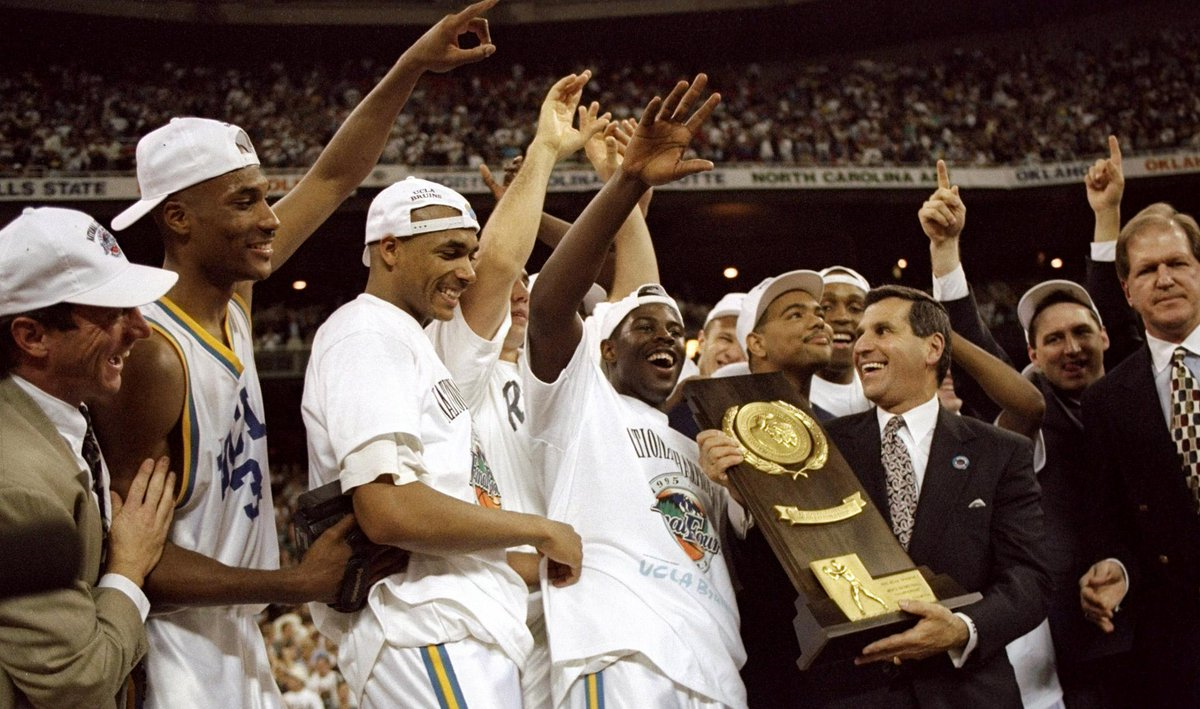 The 90s were a winning decade for the Bruins, as student-athletes brought home championships in multiple sports. UCLA Men’s Soccer won NCAA Championships in 1990 and 1997, and UCLA Volleyball won in 1993, 1995, 1996 and 1998, led by national champion and Olympians Stein Metzger ʼ96, Mike Sealy ʼ93 and Jeff Nygaard ʼ95.
The 90s were a winning decade for the Bruins, as student-athletes brought home championships in multiple sports. UCLA Men’s Soccer won NCAA Championships in 1990 and 1997, and UCLA Volleyball won in 1993, 1995, 1996 and 1998, led by national champion and Olympians Stein Metzger ʼ96, Mike Sealy ʼ93 and Jeff Nygaard ʼ95.
LGBTQ +
When "Don’t Ask, Don’t Tell" became law in 1993, it forbade gays, bisexuals and lesbians from serving openly in the U.S. military. UCLA faculty and staff, who could be discriminated against due to sexual orientation, organized secret meetings, which grew into the UCLA Lesbian and Gay Faculty/Staff Network. UCLA students Curt Shepard, Ph.D. ʼ89, Albert Aubin, Ed.D. ʼ71, and Director of Admissions Rae Lee Siporin formed a committee to work towards a non-discrimination policy and domestic partner benefits. Shepard developed a proposal to establish a student resource center, providing a template for LGBT centers around the country.
LGBT Campus Resource Center
UCLA SPORTS

1995 UCLA Men's Basketball National Champs
Women’s sports continued to thrive, as Women’s Volleyball won NCAA Championships in 1990 and 1991, led by three-time Olympian Holly McPeak ʼ95 and four-time All-American Elaine Youngs ʼ93, and Women’s Golf also won in 1991. Pitcher Lisa Fernandez ʼ95, now UCLA softball coach, led the Bruins to two national championships, in 1990 and 1992. UCLA added water polo and soccer in the 90s, although, due to the university-wide financial crisis, two successful men’s Olympic sports, gymnastics and swimming, were eliminated.
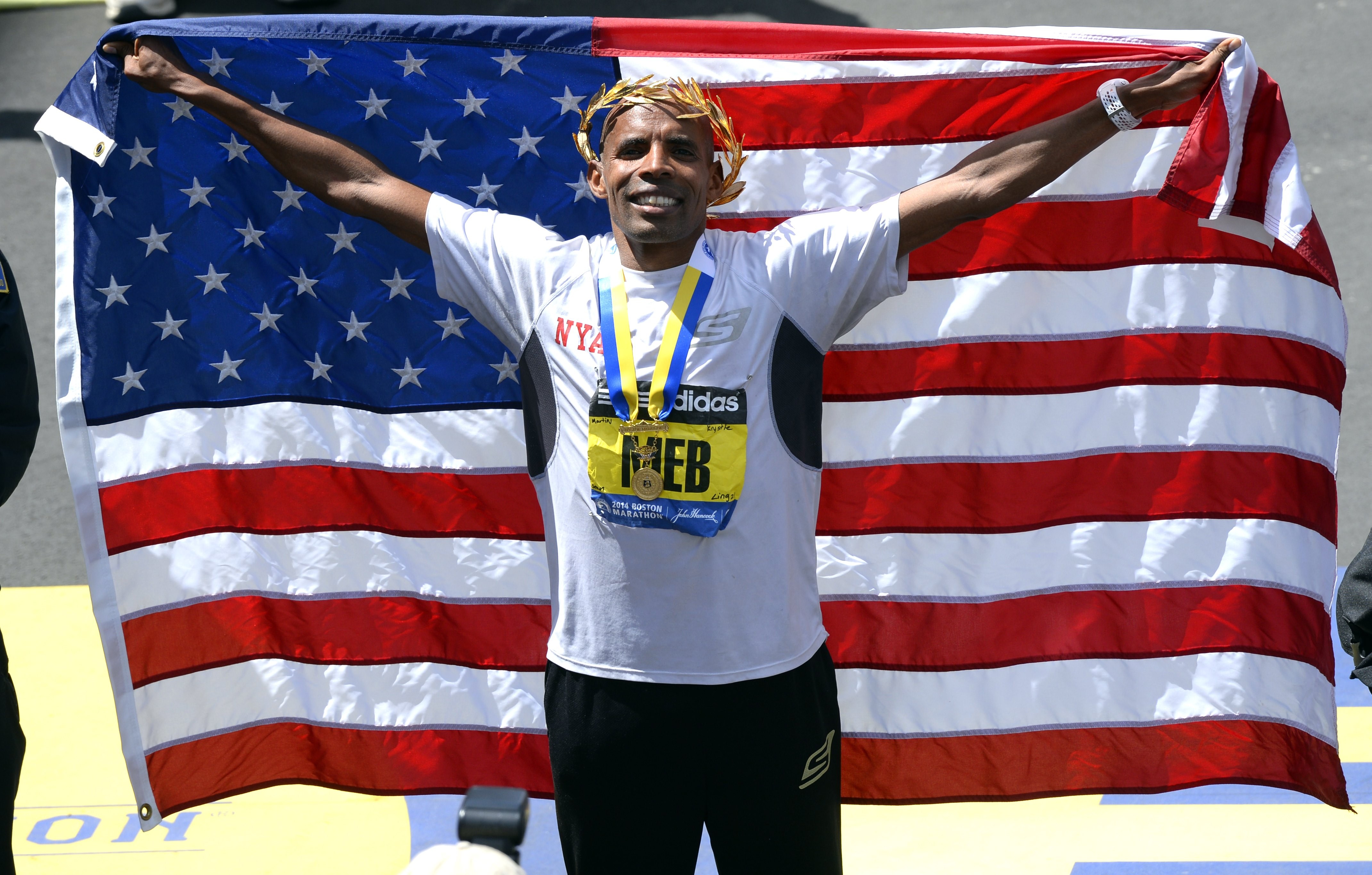 Mebrāhtōm (Meb) Keflezighi ʼ99 was the only athlete in history to win the two most storied marathons in the U.S. as well as an Olympic medal, taking the silver in the marathon at the 2004 Olympics in Athens, and winning the New York City Marathon in 2009 and the emotionally charged Boston Marathon in 2014. Born in Eritrea, he fled the war-torn country with his family. The runner holds UCLA’s record for fastest times in the 5,000 and 10,000 meters. Keflezighi graduated a year after receiving his American citizenship, and has told the New York Times, “When you dream, you dream. You don’t give up.”
Mebrāhtōm (Meb) Keflezighi ʼ99 was the only athlete in history to win the two most storied marathons in the U.S. as well as an Olympic medal, taking the silver in the marathon at the 2004 Olympics in Athens, and winning the New York City Marathon in 2009 and the emotionally charged Boston Marathon in 2014. Born in Eritrea, he fled the war-torn country with his family. The runner holds UCLA’s record for fastest times in the 5,000 and 10,000 meters. Keflezighi graduated a year after receiving his American citizenship, and has told the New York Times, “When you dream, you dream. You don’t give up.”
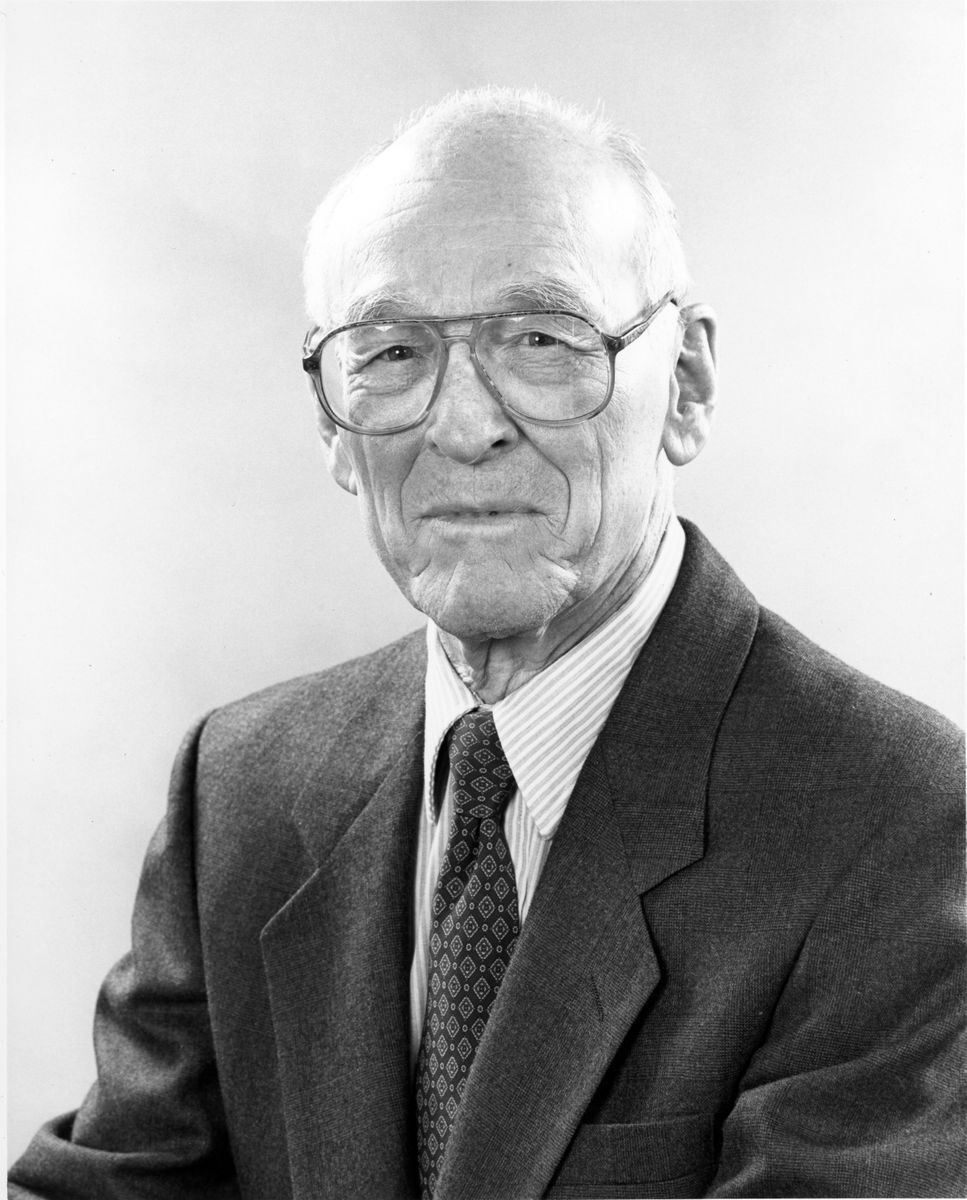 UCLA professors were honored for their great strides in scientific research. Recognized worldwide for her contributions to brain research in 1994, Dr. Elizabeth Neufeld won the National Medal of Science for her groundbreaking work on the genetic basis for metabolic diseases, specifically lysosomal storage. The 1997 Nobel Prize in Chemistry was awarded to Paul Boyer, professor emeritus of biochemistry, for his pioneering work on enzymes essential to the formation of cellular energy. And in 1998, pharmacologist Louis J. Ignarro was awarded the Nobel Prize in Physiology or Medicine for his research showing that nitric oxide helps the body regulate key functions, including blood pressure.
UCLA professors were honored for their great strides in scientific research. Recognized worldwide for her contributions to brain research in 1994, Dr. Elizabeth Neufeld won the National Medal of Science for her groundbreaking work on the genetic basis for metabolic diseases, specifically lysosomal storage. The 1997 Nobel Prize in Chemistry was awarded to Paul Boyer, professor emeritus of biochemistry, for his pioneering work on enzymes essential to the formation of cellular energy. And in 1998, pharmacologist Louis J. Ignarro was awarded the Nobel Prize in Physiology or Medicine for his research showing that nitric oxide helps the body regulate key functions, including blood pressure.
This winning streak was headlined by Men’s Basketball’s unprecedented 11th national championship in 1995. Coach Jim Harrick revived the program, leading the team to their best record since Coach Wooden’s departure. Their 1995 March Madness run was highlighted by a length-of-the-court drive in 4.8 seconds by Tyus Edney ʼ95 to hit the buzzer beater against the University of Missouri. Following the title game, as many as 4,000 fans poured into the streets of Westwood to celebrate. Called “Wild Westwood” by the LA Times, some in the crowd threw bottles and overturned a radio station van. Two hundred officers, many in riot gear, fired rubber bullets to push back the revelers, and 15 people were arrested. The next day, hundreds of jubilant fans met the team at Los Angeles International Airport on their return from Seattle.

Meb Keflezighi ʼ99 after winning Boston Marathon
UCLA Football in the 90s will be remembered for their unparalleled eight-game winning streak over crosstown rival USC (1991-1998). Coach Terry Donahue ʼ67, M.S. ʼ77, who holds the most conference wins of any football head coach in both UCLA and Pac-10 Conference history, and Bob Toledo, who led the 1996 Bruins to a stunning comeback win over USC, brought the Victory Bell home to Westwood for most of the decade.
UCLA Football player Ramogi Huma ʼ99, M.P.H. ʼ01, became an advocate for college athletes’ rights. With many teammates on full athletic scholarships living below the poverty line, Huma founded a group to advocate for student athletes. Now the nonprofit National College Players Association (NCPA), they have won victories including safety rules that help prevent workout-related deaths.
ADVANCES IN SCIENCE AND MEDICINE
In the 90s, new technology paved the way for innovative solutions. New discoveries and medical advances opened up possibilities beyond what doctors thought was possible. UCLA expanded medical programs, making great strides in cancer treatment, nursing and surgical procedures.
UCLA began clinical trials, conducted by oncologist Dennis Slamon, to test the effectiveness of a revolutionary breast cancer treatment, Herceptin, which prevents the uncontrolled growth of breast cancer cells. Herceptin gained FDA approval in 1998 and more than three million patients around the world have been treated with the drug.
The Mattel Children’s Hospital at UCLA (then the UCLA Children’s Hospital) opened in 1996. The following year, UCLA unveiled plans to rebuild the medical sciences center using awards from the Federal Emergency Management Agency (FEMA) and dedicated the Gonda (Goldschmied) Neuroscience and Genetics Research Center, home to UCLA’s Department of Human Genetics and the Brain Research Institute.
Now the largest program in the country, UCLA’s Nurse Practitioner program was established in 1994. By 1999, it had five specialized nurse practitioner programs: acute care, family, gerontology, oncology and pediatric. In 1996, the Regents approved the change in the master’s degree designation to Master of Science in Nursing (M.S.N.). Four doctoral students - Evelyn Calvillo, Nancy Fawzy, Barbara Riegel and Pam Shuler - were the first to graduate with the (D.N.Sc.) degree, in 1991.

Paul Boyer
UCLA professor of psychiatry and pharmacology Murray Jarvik was inspired to join a team of UCLA doctors to invent the nicotine patch. Jarvik had observed his wife, Lissy, struggle to quit smoking. Due to a lack of funding, Jarvik and postdoctoral student Jed Rose tested the patch on themselves. This research paved the way for the development of commercial nicotine patches, delivering nicotine through the skin and alleviating the urge to smoke. The patch became available by prescription in 1992, and as an over-the-counter treatment in 1996.
As the 1900s drew to a close, fears of Y2K heated up, as a computer programming shortcut using two digits for the year was expected to cause havoc when the date changed from 1999 to 2000. The new century would bring more growth, innovative discoveries, activism and the best and the brightest to campus to continue the task of improving the world for the better.
Series Archive